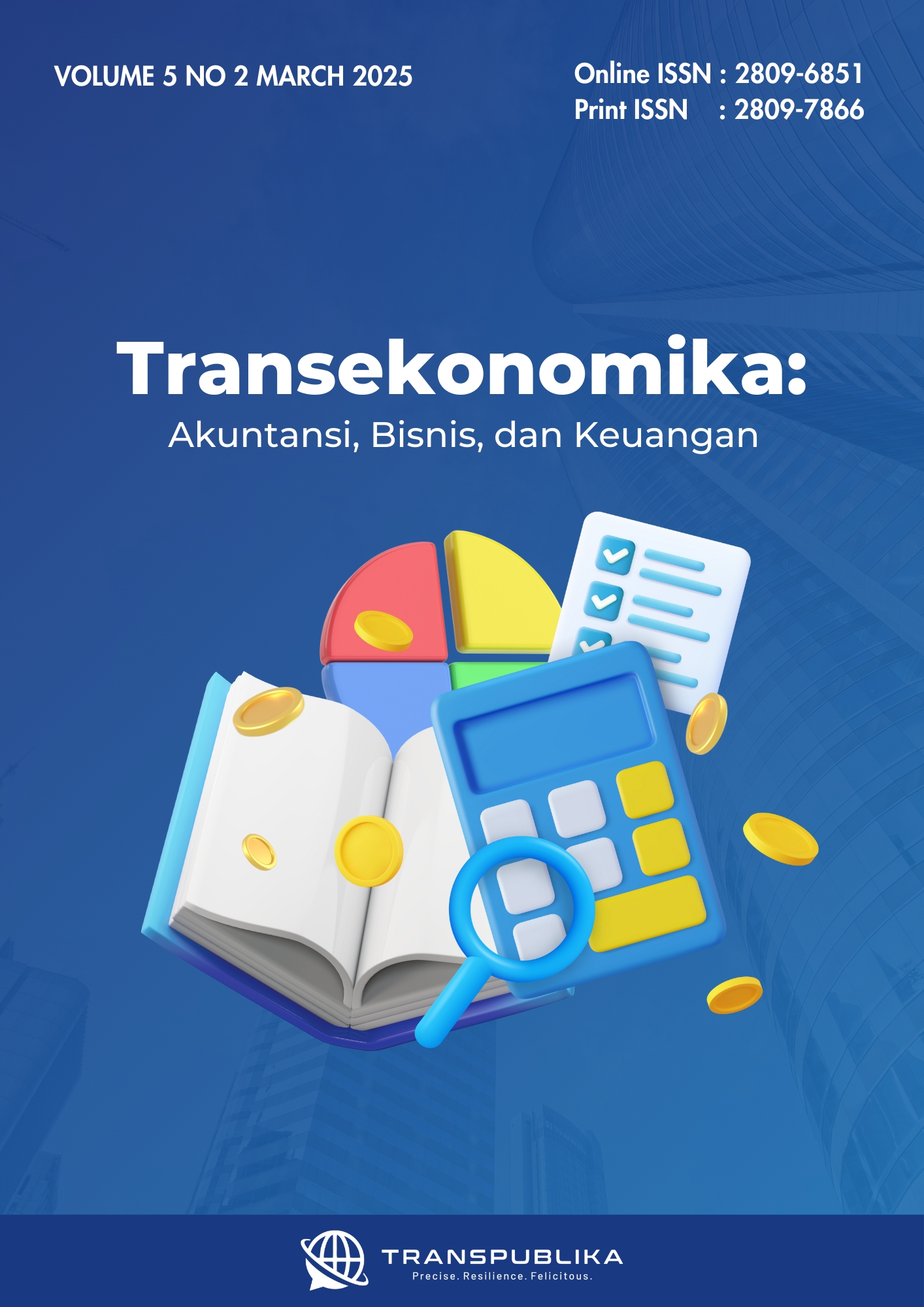Proxies Affecting Environmental Degradation: A Comparative Analysis Between Developed and Emerging Countries
Abstract
This study explores the proxies of Environmental Degradation (CO2 and N2O) in developed and emerging countries from 2001 to 2021 using panel data regression to accommodate variations over time and across entities. The result confirms the pollution hypothesis in emerging countries where foreign direct investment significantly increases N2O emissions, highlighting the necessity for stricter environmental regulations. It also reveals that GDP growth correlates with rising CO2 and N2O emissions in these regions, due to their early industrial stages, while in developed countries, GDP growth is decoupled from CO2 emissions, reflecting more sustainable practices. Trade openness in emerging economies further contributes to increased N2O emissions through deforestation and agricultural expansion. Contrarily, population growth shows a significant negative impact on emissions, suggesting increased efficiency and environmental awareness with higher population densities. These findings emphasize the importance of tailored environmental policies to effectively address the diverse impacts of economic activities on emissions.
Downloads
References
Adebayo, T. S., Akadiri, S. S., Uhunamure, S. E., Altuntaş, M., & Shale, K. (2022). Does political stability contribute to environmental sustainability? Evidence from the most politically stable economies. Heliyon, 8(12), e12479. https://doi.org/10.1016/j.heliyon.2022.e12479
Agheli, L., & Taghvaee, V. M. (2022). Political stability effect on environment and weak sustainability in Asian countries. Sustainability Analytics and Modeling, 2, 100007. https://doi.org/10.1016/j.samod.2022.100007
Al-mulali, U., Binti Che Sab, C. N., & Fereidouni, H. G. (2012). Exploring the bi-directional long run relationship between urbanization, energy consumption, and carbon dioxide emission. Energy, 46(1), 156–167. https://doi.org/10.1016/j.energy.2012.08.043
Al-Mulali, U., & Ozturk, I. (2015). The effect of energy consumption, urbanization, trade openness, industrial output, and the political stability on the environmental degradation in the MENA (Middle East and North African) region. Energy, 84, 382–389. https://doi.org/10.1016/j.energy.2015.03.004
Alotaibi, A. R., & Mishra, A. V. (2014). Determinants of International Financial Integration of GCC Markets. In Emerging Markets and the Global Economy (pp. 749–771). Elsevier. https://doi.org/10.1016/B978-0-12-411549-1.00031-4
Asumadu-Sarkodie, S., & Owusu, P. A. (2017). Recent evidence of the relationship between carbon dioxide emissions, energy use, GDP, and population in Ghana: A linear regression approach. Energy Sources, Part B: Economics, Planning, and Policy, 12(6), 495–503. https://doi.org/10.1080/15567249.2016.1208304
Aust, V., Morais, A. I., & Pinto, I. (2020). How does foreign direct investment contribute to Sustainable Development Goals? Evidence from African countries. Journal of Cleaner Production, 245, 118823. https://doi.org/10.1016/j.jclepro.2019.118823
Benzerrouk, Z., Abid, M., & Sekrafi, H. (2021). Pollution haven or halo effect? A comparative analysis of developing and developed countries. Energy Reports, 7, 4862–4871. https://doi.org/10.1016/j.egyr.2021.07.076
Carolina Rezende De Carvalho Ferrei, M., Amorim Sobreiro, V., Kimura, H., & Luiz De Moraes Barboza, F. (2016). A systematic review of literature about finance and sustainability. Journal of Sustainable Finance & Investment, 6(2), 112–147. https://doi.org/10.1080/20430795.2016.1177438
Chapuis‐Lardy, L., Wrage, N., Metay, A., Chotte, J., & Bernoux, M. (2007). Soils, a sink for N 2 O? A review. Global Change Biology, 13(1), 1–17. https://doi.org/10.1111/j.1365-2486.2006.01280.x
Chen, A., Ng, Y., Zhang, E., & Tian, M. (Eds.). (2020). Environmental Degradation. In Dictionary of Geotourism (pp. 154–154). Springer Singapore. https://doi.org/10.1007/978-981-13-2538-0_618
Christoforidis, T., & Katrakilidis, C. (2022). Does Foreign Direct Investment Matter for Environmental Degradation? Empirical Evidence from Central–Eastern European Countries. Journal of the Knowledge Economy, 13(4), 2665–2694. https://doi.org/10.1007/s13132-021-00820-y
Chryssolouris, G. (2006). Manufacturing Systems: Theory and Practice. Springer-Verlag. https://doi.org/10.1007/0-387-28431-1
Cole, M. A., & Neumayer, E. (2004). Examining the Impact of Demographic Factors on Air Pollution. Population and Environment, 26(1), 5–21. https://doi.org/10.1023/B:POEN.0000039950.85422.eb
Essandoh, O. K., Islam, M., & Kakinaka, M. (2020). Linking international trade and foreign direct investment to CO2 emissions: Any differences between developed and developing countries? Science of The Total Environment, 712, 136437. https://doi.org/10.1016/j.scitotenv.2019.136437
Faulder, D. (2021, April 21). Air pollution: Asia’s deadliest public health crisis isn’t COVID. Nikkei Asia. https://asia.nikkei.com/Spotlight/The-Big-Story/Air-pollution-Asia-s-deadliest-public-health-crisis-isn-t-COVID
French, H. (1998). Making private capital flows to developing countries environmentally sustainable: The policy challenge. Natural Resources Forum, 22(2), 77–85. https://doi.org/10.1111/j.1477-8947.1998.tb00715.x
Glen, S. (2016, May 17). Winsorize: Definition, Examples in Easy Steps. Statistics How To. https://www.statisticshowto.com/winsorize/
Grossman, G. M., & Krueger, A. B. (1995). Economic Growth and the Environment. The Quarterly Journal of Economics, 110(2), 353–377. https://doi.org/10.2307/2118443
Hamilton, I., & Eriksson, J. (2011). Influence strategies in shareholder engagement: A case study of all Swedish national pension funds. Journal of Sustainable Finance & Investment, 1(1), 44–61. https://doi.org/10.3763/jsfi.2010.0006
Hassan, S. A., & Nosheen, M. (2019). Estimating the Railways Kuznets Curve for high income nations—A GMM approach for three pollution indicators. Energy Reports, 5, 170–186. https://doi.org/10.1016/j.egyr.2019.01.001
ISIC. (2024, March 11). UNSD — ISIC. ISIC - Introduction to ISIC. https://unstats.un.org/unsd/classifications/Econ/isic
Juniarti, J., Beoang, C. F., Prayogo, M. F. S., & Samosir, P. A. (2021). Business Strategy and Environmental Performance. Jurnal Akuntansi Dan Keuangan, 23(2), Article 2. https://doi.org/10.9744/jak.23.2.95-104
Khan, I., Hou, F., & Le, H. P. (2021). The impact of natural resources, energy consumption, and population growth on environmental quality: Fresh evidence from the United States of America. Science of The Total Environment, 754, 142222. https://doi.org/10.1016/j.scitotenv.2020.142222
Khan, K., Tao, R., & Hao, L.-N. (2020). Urbanization and carbon emission: Causality evidence from the new industrialized economies. Environment, Development and Sustainability, 22(8), 7193–7213. https://doi.org/10.1007/s10668-019-00479-1
Khan, M. A., & Ozturk, I. (2020). Examining foreign direct investment and environmental pollution linkage in Asia. Environmental Science and Pollution Research, 27(7), 7244–7255. https://doi.org/10.1007/s11356-019-07387-x
Leblois, A., Damette, O., & Wolfersberger, J. (2017). What has Driven Deforestation in Developing Countries Since the 2000s? Evidence from New Remote-Sensing Data. World Development, 92, 82–102. https://doi.org/10.1016/j.worlddev.2016.11.012
Levinson, A. (2018). Pollution Haven Hypothesis. In Macmillan Publishers Ltd (Ed.), The New Palgrave Dictionary of Economics (pp. 10449–10454). Palgrave Macmillan UK. https://doi.org/10.1057/978-1-349-95189-5_2693
Liddle, B. (2015). What are the carbon emissions elasticities for income and population? Bridging STIRPAT and EKC via robust heterogeneous panel estimates. Global Environmental Change, 31, 62–73. https://doi.org/10.1016/j.gloenvcha.2014.10.016
López, R. (1994). The Environment as a Factor of Production: The Effects of Economic Growth and Trade Liberalization. Journal of Environmental Economics and Management, 27(2), 163–184. https://doi.org/10.1006/jeem.1994.1032
Mahrinasari, Haseeb, M., Ammar, J., & Meiryani, M. (2019). Does Trade Liberalization a Hazard to Sustainable Environment? Fresh Insight from ASEAN Countries. Polish Journal of Management Studies, 19(1), 249–259. https://doi.org/10.17512/pjms.2019.19.1.19
Nasir, M. A., Duc Huynh, T. L., & Xuan Tram, H. T. (2019). Role of financial development, economic growth & foreign direct investment in driving climate change: A case of emerging ASEAN. Journal of Environmental Management, 242, 131–141. https://doi.org/10.1016/j.jenvman.2019.03.112
National Geographic. (n.d.). The Greenhouse Effect and our Planet. Retrieved July 1, 2024, from https://education.nationalgeographic.org/resource/greenhouse-effect-our-planet
NOAA. (2023, April 5). Greenhouse gases continued to increase rapidly in 2022 | National Oceanic and Atmospheric Administration. https://www.noaa.gov/news-release/greenhouse-gases-continued-to-increase-rapidly-in-2022
Panagiotopoulou, V. C., Stavropoulos, P., & Chryssolouris, G. (2022). A critical review on the environmental impact of manufacturing: A holistic perspective. The International Journal of Advanced Manufacturing Technology, 118(1), 603–625. https://doi.org/10.1007/s00170-021-07980-w
Pham, N. M., Huynh, T. L. D., & Nasir, M. A. (2020). Environmental consequences of population, affluence and technological progress for European countries: A Malthusian view. Journal of Environmental Management, 260, 110143. https://doi.org/10.1016/j.jenvman.2020.110143
Rao, D. T., Sethi, N., Dash, D. P., & Bhujabal, P. (2023). Foreign Aid, FDI and Economic Growth in South-East Asia and South Asia. Global Business Review, 24(1), 31–47. https://doi.org/10.1177/0972150919890957
Repkine, A., & Min, D. (2020). Foreign-Funded Enterprises and Pollution Halo Hypothesis: A Spatial Econometric Analysis of Thirty Chinese Regions. Sustainability, 12(12), Article 12. https://doi.org/10.3390/su12125048
Sakali, C. (2015). FDI Determinants in Central and Eastern Europe and the Impact of the Global Economic Crisis. 5(1).
Sarkodie, S. A., & Strezov, V. (2018). Empirical study of the Environmental Kuznets curve and Environmental Sustainability curve hypothesis for Australia, China, Ghana and USA. Journal of Cleaner Production, 201, 98–110. https://doi.org/10.1016/j.jclepro.2018.08.039
Shafiei, S., & Salim, R. A. (2014). Non-renewable and renewable energy consumption and CO2 emissions in OECD countries: A comparative analysis. Energy Policy, 66, 547–556. https://doi.org/10.1016/j.enpol.2013.10.064
Shahbaz, M., Haouas, I., & Hoang, T. H. V. (2019). Economic growth and environmental degradation in Vietnam: Is the environmental Kuznets curve a complete picture? Emerging Markets Review, 38, 197–218. https://doi.org/10.1016/j.ememar.2018.12.006
Shahbaz, M., Nasir, M. A., & Roubaud, D. (2018). Environmental degradation in France: The effects of FDI, financial development, and energy innovations. Energy Economics, 74, 843–857. https://doi.org/10.1016/j.eneco.2018.07.020
Stern, D. I. (2004). The Rise and Fall of the Environmental Kuznets Curve. World Development, 32(8), 1419–1439. https://doi.org/10.1016/j.worlddev.2004.03.004
Stern, D. I. (2017). The Environmental Kuznets Curve. In Oxford Research Encyclopedia of Environmental Science. https://doi.org/10.1093/acrefore/9780199389414.013.401
Sulaiman, C., & Abdul-Rahim, A. S. (2018). Population Growth and CO2 Emission in Nigeria: A Recursive ARDL Approach. Sage Open, 8(2), 2158244018765916. https://doi.org/10.1177/2158244018765916
Sulisnaningrum, E., Mutmainah, S., Priyanto, E., & Chapuzet, A. C. (2023). Environmental Taxation and Green Economics in Southeast Asia. Jurnal Akuntansi Dan Keuangan, 25(1), Article 1. https://doi.org/10.9744/jak.25.1.17-24
Sun, C., Zhang, F., & Xu, M. (2017). Investigation of pollution haven hypothesis for China: An ARDL approach with breakpoint unit root tests. Journal of Cleaner Production, 161, 153–164. https://doi.org/10.1016/j.jclepro.2017.05.119
Tiseo, I. (2023, March 18). Global nitrous oxide emissions 1990-2022. Statista. https://www.statista.com/statistics/1379448/annual-global-nitrous-oxide-emissions/
Torras, M., & Boyce, J. K. (1998). Income, inequality, and pollution: A reassessment of the environmental Kuznets Curve. Ecological Economics, 25(2), 147–160. https://doi.org/10.1016/S0921-8009(97)00177-8
Trang, N. Q., An, T. V. N., & Nguyen, H. T. (2023). Environmental Management and The Influence of Foreign Direct Investment in Southeast Asia Policy Implications. Polish Journal Of Management Studies, Vol.28 No.2. https://doi.org/10.17512/pjms.2023.28.2.21
Tsoy, L., & Heshmati, A. (2023). Is FDI inflow bad for environmental sustainability? Environment, Development and Sustainability. https://doi.org/10.1007/s10668-023-03844-3
UNCTAD. (2022, June 9). Foreign investment in developing Asia hit a record $619 billion in 2021 | UNCTAD. https://unctad.org/news/foreign-investment-developing-asia-hit-record-619-billion-2021
UNCTAD. (2023a). World Investment Report 2023. https://unctad.org/publication/world-investment-report-2023
UNCTAD. (2023b, July 5). Investment flows to developing countries in Asia remained flat in 2022 | UNCTAD. https://unctad.org/news/investment-flows-developing-countries-asia-remained-flat-2022
UNESCEWA. (2015, October 6). Trade Openness. United Nations Economic and Social Commission for Western Asia. https://archive.unescwa.org/trade-openness-0
Vallero, D. A. (2016). Engineering Aspects of Climate Change. In Climate Change (pp. 547–568). Elsevier. https://doi.org/10.1016/B978-0-444-63524-2.00031-2
Wang, Q., & Wang, L. (2021). How does trade openness impact carbon intensity? Journal of Cleaner Production, 295, 126370. https://doi.org/10.1016/j.jclepro.2021.126370
Worldbank. (2022). Glossary | DataBank. Retrieved April 14, 2024, from https://databank.worldbank.org/metadataglossary/world-development-indicators/series/BX.KLT.DINV.CD.WD
Worldbank. (2023, December 20). Trade (% of GDP) | Data Catalog. https://datacatalog.worldbank.org/indicator/f22f8e24-c0ce-eb11-bacc-000d3a596ff0/Trade----of-GDP-
Zhang, K., & Wang, X. (2021). Pollution Haven Hypothesis of Global CO2, SO2, NOx—Evidence from 43 Economies and 56 Sectors. International Journal of Environmental Research and Public Health, 18(12), 6552. https://doi.org/10.3390/ijerph18126552
Copyright (c) 2025 Alvin Cahya Saputra

This work is licensed under a Creative Commons Attribution 4.0 International License.








.png)







.png)


.png)

.png)















